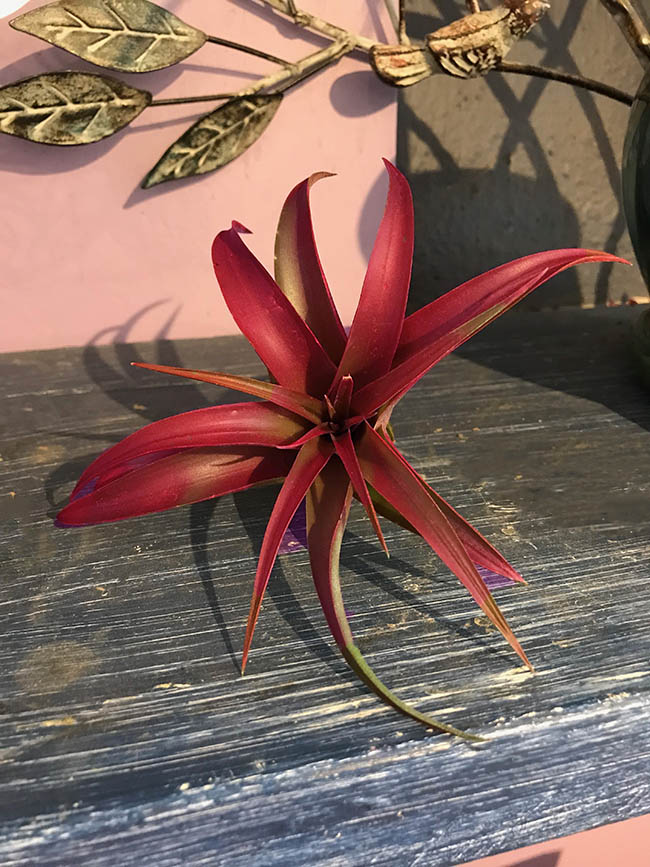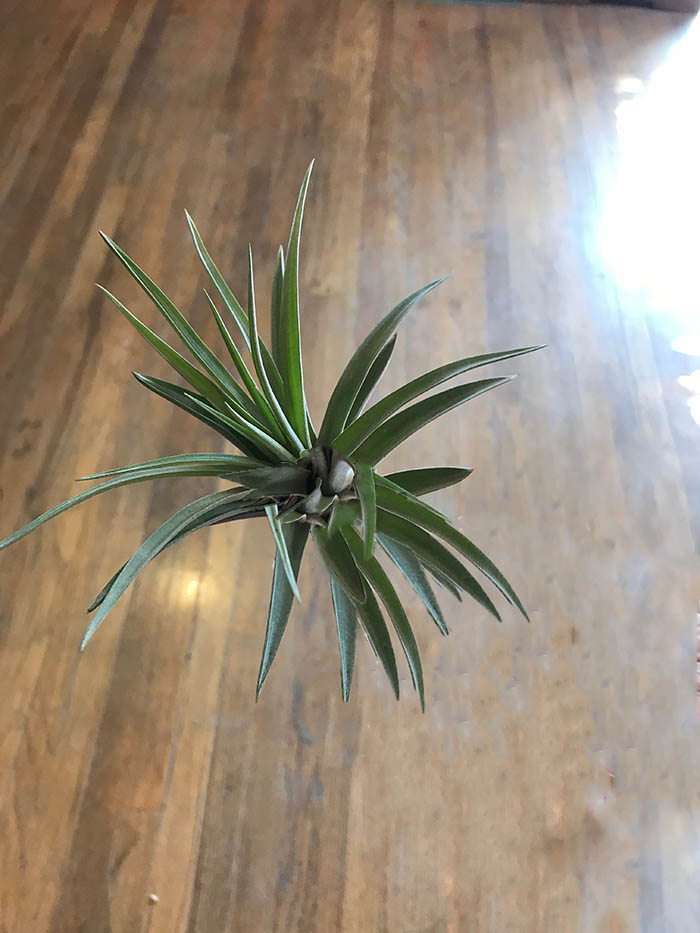Last updated on March 9th, 2025 at 07:37 am
Air Plants Care Guide (tillandsia). These plants are small spiky plants. They are considered a novelty type of plant great for indoor decor in a pot or just hanging them in the “Air”. In other words, there is no soil, nada, it just sits wherever you place it.
Tillandsia plants are captivating green wonders, and are a hit among succulent lovers, offering a unique twist on traditional greenery. Unlike most houseplants, air plants don’t need soil to thrive. This makes them an exciting, low-maintenance choice for any space. But, how do you keep them healthy and vibrant? It’s easier than you think. By understanding their simple needs, like the right light, watering, and air circulation, you’ll ensure your tillandsia remains a lush centerpiece.
How to care for air plants
It’s really easy they like to be watered often but watering is different compared to plants in soil. Here are a few tips to help keep your Air Plants looking good all year long.

Air Plant Care
- These plants like lots of sunlight. Place them underneath a skylight or near a bright window. Fluorescent light works well, so an office setting is a good place for them.
- Keep them away from direct sunlight; too much sun can burn the outer layer of the plant.
- You can mist them thoroughly about 3-4 times per week.
- Place them in a container with water and let them soak for about 15-20 minutes 2 or 3 times per week. Do either 3 or 4, not both.
- Air Plants like temperatures about 60-90 degrees Fahrenheit as often as possible.
- Gently pull off older leaves that are drying out. This will help with new growth.
- Air Plants do not like lots of fertilizer but should be fertilized about 2-3 times per year. Use a good water-soluble fertilizer. Use a couple of drops in a spray bottle or apply it to your container when watering your plant.
- Do not let your plants freeze. Keep them away from colder weather.
- Fertilize them with bromeliad or orchid fertilizer. Mix it with water and add it to your spray bottle. More on feeding Air Plants further below.
- Use bottled or regular water from your faucet.
Where to place your Air Plants?
As mentioned earlier, these plants do not like soil, but they can be placed in a nice decorative container. Below is a few examples of what you can do with this plant.
Place them near a window or underneath a skylight. Please make sure they get good in-direct sunlight.



Nutrient Needs for Airplants
To keep your tillandsia looking its best, understanding their nutrient requirements is key. While air plants mainly rely on moisture and air for sustenance, incorporating some fertilizer into their care routine can make all the difference. Let’s explore how you can give your airplants that extra boost.
Choosing the Right Fertilizer
When it comes to fertilizing air plants, picking the right type is crucial. Not all fertilizers are created equal, and using the wrong one can do more harm than good. You’ll want to look for a bromeliad or airplant-specific fertilizer. These are typically available in liquid form and are gentler on the plants.
Here’s a quick checklist for selecting the right fertilizer:
- Nitrogen Source: Make sure it is in the form of ammoniacal or nitrate nitrogen, not urea-based, as this can be harmful.
- Balanced Nutrients: Look for a balanced N-P-K ratio, like 10-10-10, which provides equal parts of nitrogen, phosphorus, and potassium.
- Water Soluble: Ensures easy application, often mixed with water for soaking.
Fertilizing with the right product encourages growth, vibrancy, and bloom potential in your air plants.
Frequency of Feeding
How often should you feed your tillandsia? This might remind you of meal-planning for your family, but thankfully, it’s less frequent. Typically, air plants need feeding just once a month. Here’s why:
- Monthly Feeding: Keeps nutrient levels steady without overwhelming the plants.
- Dilution: Use a diluted solution to minimize risk — think of this as light seasoning rather than a full meal.
- Seasonal Adjustments: During active growing seasons, like spring and summer, you might increase frequency slightly. Conversely, dial it back in fall and winter when growth slows.
Conclusion
Caring for air plants like Tillandsia isn’t complicated. With the right lighting, water balance, and a sprinkle of nutrients, these charming plants thrive, adding a unique flair to your collection. Give them a cozy spot with indirect light and make sure to soak them regularly. Pay attention to their health to catch any signs of stress.
Want a fun project? Get creative with your display ideas—mount them on driftwood, hang them in glass orbs, or frame them up. They’re versatile and perfect for any decor style.
Embrace the joy of having air plants in your home. As you care for them, you’ll not only beautify your space but also gain a rewarding experience. Ready to add some airplant magic to your succulent setup? Share your creative displays and tips with fellow plant lovers!

Greenhouse Manager, Master Gardener, and Webmaster.
If you have any questions or enjoyed this post, feel free to share your thoughts in the comments below.


